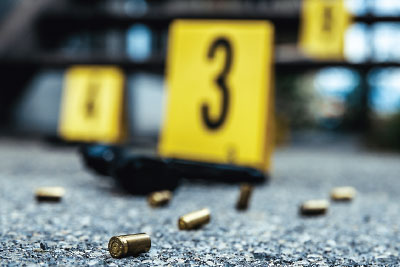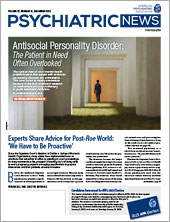Though gun violence (encompassing homicide, suicide, and accidental shootings) is widely recognized as a public health emergency, it should also be understood as a social determinant of health. Such was one key message from a multifaceted session on gun violence prevention at this year’s Mental Health Services Conference.
As Aradhana Sood, M.D., a professor of psychiatry and pediatrics at Virginia Commonwealth University, explained during her presentation, the data on the health impact of guns are stark: Firearms are involved in about half of all suicides and three-quarters of homicides, and gunshot wounds account for nearly $3 billion each year in hospital costs. Identifying risk factors for potential gun violence (whether being a perpetrator or a victim) is critical for prevention strategies.
Sood noted that many common risk factors are related to an individual’s personal history—such as having a history of violent behavior, a history of drug or alcohol use, and easy firearm access. Community-level factors collectively known as the social determinants of health also play a role.
Social determinants of health include various conditions, resources, and opportunities present in a neighborhood that impact health outcomes. These factors include the concentration of poverty, pollution levels (such as air quality and noise levels), crime rate, and access to items like nutritious food and mental health care.
As Sood explained, when social determinants of health in a neighborhood are poor, residents face many adversities including the following:
•
Poor social capital (the level of trust in a community toward public institutions like police).
•
Poor social mobility (the ability to rise in economic or educational status).
•
High racial and economic segregation.
“The World Health Organization has declared that 90% of the variance in health care outcomes [between groups] arises from the social determinants of health,” Sood said. And though the impact of social determinants of health has been better studied for conditions like diabetes, data also link these determinants to gun violence.
Sood highlighted one study that compared the incidence of firearm-related homicides in 2015 across more than 70,000 census tracts in the contiguous 48 states. The analysis found that every standard deviation increase in social capital was associated with a 19% reduction in the homicide rate, whereas every increase in neighborhood poverty percentage was associated with a 26% increase in homicide rate.
Another analysis in a more localized area (Syracuse, N.Y.) found that compared with children in neighborhoods with a low rate of firearm homicides, those in neighborhoods with a high rate had about 50% lower math and English scores. “This suggests community violence may be an important though underrecognized determinant of poor school performance,” she said.
This indirect cost must be added to the direct effects of gun violence. Sood cited data showing that over 17,000 youth are injured or killed each year as a result of gun violence.
“We cannot become desensitized to how many children and their families have their whole life trajectory changed in this manner.”
Therefore, while legislation and community programs targeting individuals—like extreme risk protection orders to temporarily confiscate weapons, safe storage education, and school programs that enable youth to anonymously report suspicious behavior—are crucial, officials need to also think about higher-level solutions. “We need interventions that interrupt the cycles of violence [in communities] and connect highest risk individuals to a variety of social services,” Sood said.
During the question-and-answer portion of the session, audience members agreed that more action needs to be taken by groups that can enact large interventions—namely, government at state and federal levels. In discussing how gun violence in Baltimore has affected so many of his Black patients, Curtis Adams, M.D., a community psychiatrist and assistant professor at the University of Maryland School of Medicine, said that the people in the areas he serves will not get rid of their firearms until the state takes action to make them feel safe.
“The challenge is to get everyone to agree that people who look like me are actually precious,” he said. ■

